Episode #422: How One School Used the Stages of Implementation to Drive Real Change
LISTEN NOW HERE…
WATCH NOW…
You’ve got a strong teacher, strong strategies—and still, the innovation stalls. What gives? In this episode, we tackle what’s really behind resistance in math PD and why most implementation efforts collapse long before proficiency is even possible.
Building on our last episode, we unpack how a school we support used the five implementation stages—Non-Use, Awareness, Mechanical, Routine, and Proficient—to move real teacher practice forward in mathematics.
You’ll hear how assumptions like “math teachers just need to buy in” or “they’re too comfortable” miss the point—and how shifting the conversation back to student outcomes changed everything.
Listen in to learn:
- What each of the five stages of implementation looks like in real math classrooms
- Why most resistance towards math PD is rooted in fear, fatigue, or flawed systems—not mindset
- How to use department meetings and peer examples to build momentum in mathematics
- Why focusing on student growth—not compliance—creates authentic engagement in math class
- What math leaders can do to provide the right support at the right stage
Hit play to explore how real school teams are flipping the script on math improvement implementation—and how you can do the same by putting students, not strategies, at the center of your plan.
Attention District Math Leaders:
Not sure what matters most when designing math improvement plans? Take this assessment and get a free customized report: https://makemathmoments.com/grow/
Ready to design your math improvement plan with guidance, support and using structure? Learn how to follow our 4 stage process. https://growyourmathprogram.com
Looking to supplement your curriculum with problem based lessons and units? Make Math Moments Problem Based Lessons & Units
Be Our Next Podcast Guest!
Join as an Interview Guest or on a Mentoring Moment Call
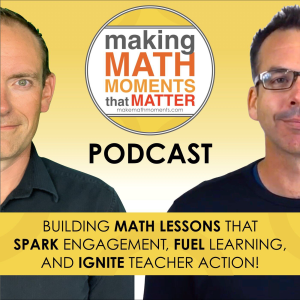
Apply to be a Featured Interview Guest
Book a Mentoring Moment Coaching Call
Are You an Official Math Moment Maker?
FULL TRANSCRIPT
In this episode, we are going to build on the episode that we released a few days ago on Monday. And that episode was all about unpacking the levels of implementation for strategy adoption in classrooms with mathematics teachers. And we referenced an article from Jim Knight, and he unpacked in this article, why people are resisting and then specifically some stages that would be important for us to know so that we can address those barriers. And the key insight that we stated in that, which was he stated, is that, you know, when you have resistance and you have a lot of resistance to a particular strategy, it’s not a person or a personnel problem. It’s a system problem. And therefore adjusting your system can be an important move to make to say, clear up some of those resistance issues. So some of the resistances that we quoted, you know, and that we’ve also seen in the districts that we’re supporting. On the Monday episode, we’re about teachers pushing back, this is not for me, we talk about buy-in, we talked about perfectionism, like don’t wanna do that because I need to be perfect at it, that A plus syndrome instead of having that B plus mentality that I’ll go in and not be perfect but I’m gonna learn and get towards A plus, that’s a reason teachers typically push back because we have that thought. Also a reason that we as leaders have that as well when we resist. ourselves implementing new strategies. The other one was that we talked about a resistance was that our system itself has a poor track record of consistency. We shift initiatives way too often and therefore teachers don’t, the traction’s not there mostly because we just, they learn that this is not gonna be implemented or reinforced or supported along the way and it didn’t make sense for them. It didn’t help with their goals in the long run. So some of these are the resistance barriers we’re up against but We said in that Monday episode is that knowing about the five levels of implementation when you’re implementing an instructional routine is really important because it can help you move through the teacher or a group of teachers through those levels and knowing about the levels and knowing where they are on those levels can help overcome these barriers. You’re gonna have less resistance because we’ve got consistent follow through from our support. We have less resistance because we’ve given time for teachers to grapple and take that B plus mentality and become better at it. And we’re gonna change the culture of professional development. So let’s quickly recap the five, five implementations. And then today what we’re doing is we’re gonna unpack what this looks like at a school. We’ve got an example from a school that we’re supporting and how they’ve used the levels of implementation to actually get some great results.
So the stages go from non-use all the way to proficient. And so in that non-use stage, basically people are not using this innovation either because they don’t know about it. So you don’t know, I always say this, like people don’t know what they don’t know and nobody can be faulted for that. Or they know about it, but they’re intentionally avoiding it because it just doesn’t align with their values or their goals or they don’t believe it aligns. And so they’ve resisted and they just haven’t even attempted to implement beyond there. And I shared on the last episode, I think many of us get stuck between stage two and three in education. And two is awareness. Meaning, I know I’ve heard that before, I’m pretty sure we had a PD day where they talked about that last year. So I can speak to it, I have, you know, a recollection of some professional learning around it. But it’s led to inaction, it hasn’t changed anything about my classroom experience. we move from awareness to mechanical, which is a really important phase in implementation because right now we’re taking action, we’re trying. But the problem with mechanical is that mechanical is often effortful. It can be clunky. It sometimes doesn’t yield the results we were hoping for. And this is the risk of mechanical is this is where we then abandon. It’s not that the innovation isn’t successful, it’s that we just haven’t moved people beyond mechanical, so then we just completely toss it out and try again.
And that’s mostly because we’ve talked about the four levels of adoption, which are a little bit, I don’t wanna like, my gosh, how many steps and levels. But I mean, like that part we talk about is that this is where I think so many teachers fall off because at Mechanical, this is where we need the most help. We need the most guidance, we need the most support. And oftentimes we don’t dedicate continued follow-up support, which accounts for 90 % of adoption. And it really has to happen right there. Like if you’re going to move past mechanical into routine and proficient, and get to proficient, you’ve gotta dedicate the appropriate amount of support to teachers so they can move through that mechanical stage.
Beyond mechanical, we get to routine, which means, you know, if I was to walk into your classroom, I would routinely see this innovation happening across the school. Perhaps it’s like, yes, as a school, we have adopted the three-part math lesson. And if you were to walk into our classrooms, you would routinely see educators using this lesson structure. But the problem with routine is that sometimes when we’re at that routine phase, yes, it’s become part of our practice. but we may have oversimplified it or we may have actually become rigid where it’s like, no, the book says I have to teach it this way in this order for this long every day. And I’m not willing to budge or change because I haven’t really deeply internalized the innovation to the point where I can adapt it and be flexible. And when we move past that stage, know, it’s a routine means it’s happening. It’s happening consistently, but maybe with a lack of depth of understanding. But when we get to proficiency, which is where we are all striving to be, that means I deeply understand it. I’ve internalized it, but I’m also willing to adapt. I can adjust. I can be responsive to student needs. And I know that I don’t have to be rigid.
And so just as another quick reminder, in the previous episode to this one, so if you just scroll back one episode in your player, we unpacked each of these five at a much more in-depth level than what we’ve done here today. And so we wanna use these today though, but then unpack an example at a school site that are using the levels of imitation to get some great results. So let’s dive into that example event.
So I met with a school team last week. It was a principal and a math lead. It’s a middle school, so there’s a small number of math teachers on staff, their content specialists. And where they were in their math improvement journey is the lead teacher had been working in collaboration with the larger team at some data analysis. They’ve had some stagnant scores over the past five years. So their trend data suggests that, you they’re not moving a lot of students to better outcomes. And so the lead teacher in collaboration with another teacher on the team had started to innovate in a few ways as far as both their instruction and in particular their assessment. So they started to make some changes to the scope and sequence for. seventh and eighth grade level. They also started to look at depth of knowledge questions on the summative assessments and they had more open response questions where students were justifying and reasoning. They were embedding those types of questions more routinely into their practice. They were embedding more formative assessment and the lead teacher shared, know, I’m seeing huge gains for students. Like this is about kids. It’s about improving outcomes for students and she said in particular It’s my historically marginalized or at risk students who are benefiting the most and her kind of thinking, which I’ve shared in the past is like. If I teach to the top, those students are probably going to be fine in spite of me. But like, how am I going to make sure that I have greater access for all and that more students and so interestingly, it’s like she’s actually taken this group and moved to like 90 % of students meeting benchmark this semester so far based on her assessment data. So that’s just a bit of a background of like what we’re talking about here as far as innovation and shifts in practice. So the principal and the lead teacher came to me and said, We want to support some of these changes in other classrooms with other teachers because we want to leverage them. And we also have talked in the past about equitable access to an educational experience where I don’t go to class A and have a drastically different experience from class B.
It can be as a leader in your building, knowing that is like, do I make that better? Right? And this is what they’re asking.
Yeah, so they came to, you know, to a meeting to basically say, here are some of the changes that we’re hoping to adopt across classrooms at the middle school because we’re seeing the impact on students, but we have resistance. We have resistors. The biggest one was the the teachers were saying, well, And sorry, before you begin, the strategy was, it’s like, hey, we know there are some assessment strategies that we wanna spread across different, the grades in this one school, and we’ve heard about them, but we have resistance to them, correct? Okay.
Right, yes. And so some of resistance came from, well, you know, we know the district’s doing a curriculum review next year, so we’re not going to bother changing anything. Right.
Again, we’re gonna shift focuses next year and everything we’re doing now is not gonna matter next year. ⁓ same, right.
Right, so why am I gonna put the effort in now, right, when we know that change is coming? So that was, I think, the biggest. And I think it was also a little bit of that perfectionist, you know, it’s like, I’m doing what I’m doing and it’s working for me and I’m comfortable with it and I know how to do it and now you’re asking me to be vulnerable, you’re asking me to change.
Yeah, and I wanna just, I wanna add to that resistance, because the feeling is real, right? Like here’s the other part of that resistance that maybe we haven’t thought about, or maybe we have thought about, is that thinking about the things that are on your plate as an educator, right? It’s like, I’ve already implemented this and this. Like you’re saying, I feel good about what I’m doing because it’s working for me. Maybe I’m not getting those results over in classroom B next door. but right now I’m getting these results. And if I’m gonna make a shift and I only have so many things on my plate, which means like one thing’s gonna be maybe I have to push that one thing to the side of my plate and then not focus that one thing as much anymore because I have to make room for the new thing. Well, what happens if that one thing was getting me the results that I’m getting now and then I’m do worse? because of that, like it’s like, this is the big thing about like initiative fatigue is that we put a bunch of things in place and then we don’t monitor the right thing so we don’t know what to take off. We don’t wanna take anything off because all of a sudden we don’t know what the result will be if we take that thing off and maybe that thing the whole time wasn’t actually causing you to get any results at all. But you don’t wanna take it off because you just don’t know. And so that’s in the back of many I think people’s mind, they might not be able to articulate it that way. but I think that’s there, you know, as a resistance when we say like, ugh, don’t know if I can fit that in.
So we talked in our meeting about some strategies. So they’re fortunate, they do have department meetings three times a month, so there’s opportunity for collaboration. And so our whole planning session was how are we gonna go into this meeting and present this innovation in a way that’s going to lead to less resistance? Because right now, the other teachers on the team are in the awareness stage. They know about it. They’ve talked about it in past meetings. They’ve seen the assessments and the shifts that the teachers made. They’re aware.
It’s kind of like they’re in awareness, but then they go back to non-use, right? So like I’m aware, but I’m not using it.
Right, right. So they’re aware they can speak to it. They have some information, but it’s like it hasn’t led to any action. There’s no change in their own practice. And so the recommendation that came from our brainstorm was actually echoed in the article from Jim Knight, which is like focus on student growth. Don’t make the focus of the conversation about what the teacher needs to do change. It’s like focus on the outcomes you want for students. So go into the meeting and talk about the group of at-risk students who were previously in past semesters not meeting benchmark who are now meeting benchmark. And unpack the different factors that went into those greater outcomes for that particular group of students. And then maybe come together as a team and commit to identifying these students who are not at benchmark in ways that we can collectively. support them in having better outcomes. Like focus on the students, focus on the growth you want.
Right, focus on your dream outcome. And then say, how am I doing now? What am I doing now? Does that produce the dream outcome? And if so, then there shouldn’t be an issue. But if the dream outcome doesn’t match what we’re trying to strive towards, then you have to say, what could we do to get there? And then you’re saying, let’s only talk about that. Let’s say we’re going there, and what are we prepared to do to get there? We say this is some factors that can help us get there. Can we live with trying these factors for the next blank amount of time to see if we can also get similar results because we’re not currently addressing this. This is where we’re trying to go and we’re not getting there. Even though this isn’t a specific example that was helping, say, these marginalized students improve their achievement, which we should all be doing, but I mean. this is a bigger picture, like there’s a bigger picture here because what they’re saying is like, there is an outcome that we’re after, we’re currently not here, there, there yet, here, here and here, but what are the moves we could be making as a team to get there and what are we all committed to making sure that, to achieving to get to that goal? That’s an important question we have to ask ourselves.
Right. I think that shifts the conversation from like, do things the way this person is doing it. Right? Like it’s not about everybody should do what this person’s doing because this person knows best or this person is doing a better job. It’s about these are the outcomes that we want. And so how are we going to get there? What strategy are we going to implement? What innovation is going to help? Well, here’s one that’s working. in our context in our school with our students.
Right, and what you’re doing, right, is you’re bringing the team into the decision-making factor, because you’re saying, like, here are facts. We’ve got some data that suggests this, we’re trying to go to this outcome. Let’s set aside for a sec that we’ve seen some successes over here with these strategies. We wanna get there, but let’s open the floor here. Like, we wanna go there. Like, what do we think could get us there? Like, we’ve got a pathway over here that we could be taking, but what else could we be doing, or in side-by-side could we be doing? to get there and what you’re doing is you’re opening that floor to empower teacher voice to say, hey, you’re right, it’s not just follow that person, it’s we’re all trying to do this and we’re moving closer together because of that.
I mentioned to the leader as well, so I said, okay, so by the end of the meeting, what you’re ultimately working toward is a commitment. So a strategy or shift that we’re all willing to commit to. And so then I said, so then how are we gonna provide the pressure and support to see that through? So what is your role as the administrator? If the team walks away and says, yes, we’re gonna commit to using our department meetings to look at our summative assessments and determining depth of knowledge on the questions that we are, like if that’s the commitment, then what’s the follow-up? What’s the follow through? What’s the accountability?
Hmm. Yeah. And I’m go back to my rider and my elephant for a sec, because there’s the pathway, right? So the analogy we’ve shared on the Monday episode, but we’ve shared it here on the podcast with lots of times if you’re regular listener is that, you know, in the book, Switch from Chip and Dan Heath, they talk about this analogy about there’s a rider and there’s an elephant, there’s a pathway, you’re trying to make shifts. And this is a good analogy, because the rider is your logic. You have to direct the logic, which is like, what’s the data say about doing that, right? Like, sometimes we do that in education. or many times we do that. But then the emotional side, we address that specifically on the Monday. It’s like, don’t do enough to help everyone understand, this is the right thing to do, because emotionally it makes sense. We have to overcome those barriers, those worries. Even in that brainstorming session, if you’re with teachers going, what are we prepared to do, that question you also say is like, well, what are we afraid of? What are we really worried about here? And use the word really, because then teachers will say, well, maybe it’s because, what are we gonna do about standardized tests coming up? These are worries that we do have to address, which addresses your rider. But what you’re speaking to is when you think about the pressure, that’s the opportunity to clear the pathway, which also has to be done. You have to address the rider, you have to direct the rider, you have to motivate the elephant, you have to make the pathway easy to get to. And how can I, me as an administrator, what kind of moves I can make to make it easy to go down that pathway so that we can commit to the things we wanna commit to.
This is the work that we do all the time, which is why we enjoy the work we do so much because we are working with real people in districts across North America, trying to tackle these barriers. Like this is the reality, right? And as I mentioned, one school at a time, yes. And like, as I mentioned, I think we so often, you know, get stuck in these early stages of implementation and then we abandon. And that goes back to like, there’s no follow through. We’re flipping the script constantly. We never give it enough time and support to see it through to get to proficiency before we’ve already deemed that it’s a failure and we’ve moved on to something else. And so I think that this article is a great place for all leaders to start to really recognize that if we want proficiency, we need to know what these stages look like. And then we need to strategically plan our interactions. And I go back to that one quote that I shared at the top of the last episode. Resistance probably has nothing to do with personal characteristics of people in most cases. It might be the system, which we’ve talked about, but it also might be the change agents. It might be the way that we’re going about. And so this is a perfect example at the school level. They could have gone in and mandated that everybody do exactly what this other teacher’s doing. And it could have been a top-down. no voice, know, no input from others. Like there’s, there are ways that sometimes we go about change that are just not productive and aren’t going to lead to true proficiency. So these were some good reminders about, I think my biggest takeaway when it comes to how do we support change is always coming back to the student, the student outcome that we’re working toward a visible outcome for students that matters. We can all rally around. Of course we want more of our historically marginalized students to be meeting benchmark. Of course we do. So what are we going to do to ensure that happens?
Love it, love it. Yeah, we’re put the link to this article in the show notes so you can scroll down a little bit and click that link to get a little bit more info there from Jim Knight, the author of the article specifically. Yeah, knowing those five are key so that you can address some of those barriers, but then having actionable insights, actionable moves to make is your actual next move. Like what are you prepared to do? And if you need some guidance along the way, this is what, like Yvette said, this is what we do. We help teams. basically decide on the moves they make during the year on should I be doing that or should I be doing that and how do I overcome this barrier and overcome that barrier. We have a four stage process we help our teams go through from the start of the year to the end of the year or starting mid-year and moving into the next year. We typically support teams for one to three years to try to help them install a sustainable and aligned math improvement plan operating system. So. If you want some guidance there and us to kind of take a peek at under the hood of what that could look like with you, then reach out to us at McMathMoments.com board slash district.
Thanks For Listening
- Book a Math Mentoring Moment
- Apply to be a Featured Interview Guest
- Leave a note in the comment section below.
- Share this show on Twitter, or Facebook.
To help out the show:
- Leave an honest review on iTunes. Your ratings and reviews really help and we read each one.
- Subscribe on iTunes, Google Play, and Spotify.
DOWNLOAD THE 3 ACT MATH TASK TIP SHEET SO THEY RUN WITHOUT A HITCH!
Download the 2-page printable 3 Act Math Tip Sheet to ensure that you have the best start to your journey using 3 Act math Tasks to spark curiosity and fuel sense making in your math classroom!
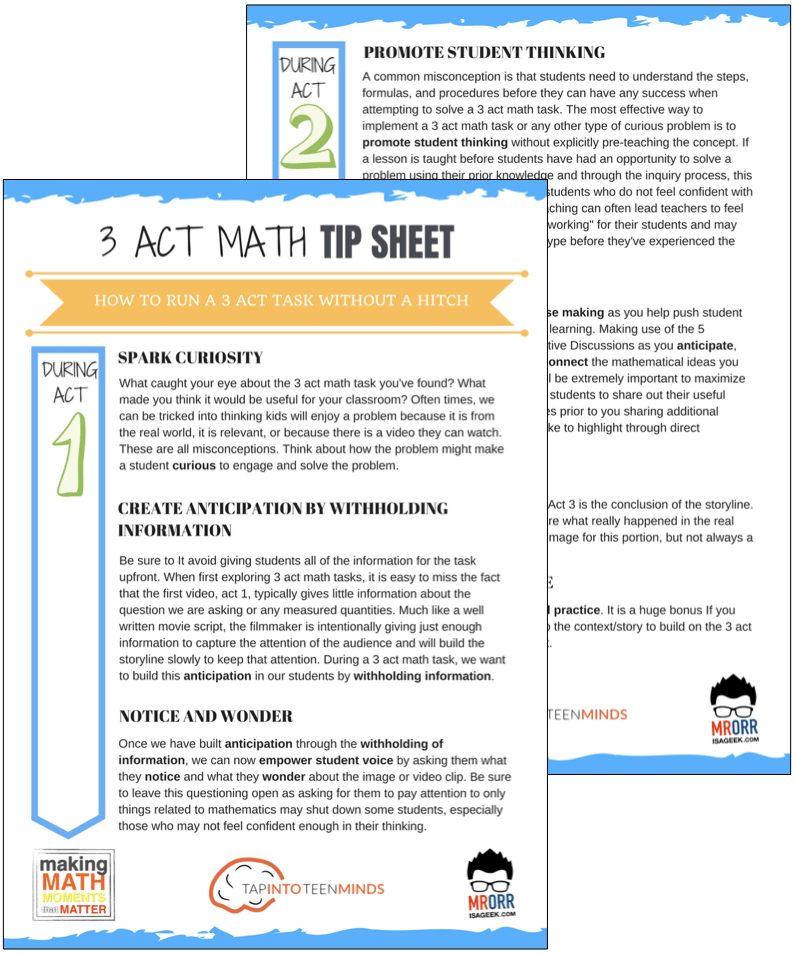
LESSONS TO MAKE MATH MOMENTS
Each lesson consists of:
Each Make Math Moments Problem Based Lesson consists of a Teacher Guide to lead you step-by-step through the planning process to ensure your lesson runs without a hitch!
Each Teacher Guide consists of:
- Intentionality of the lesson;
- A step-by-step walk through of each phase of the lesson;
- Visuals, animations, and videos unpacking big ideas, strategies, and models we intend to emerge during the lesson;
- Sample student approaches to assist in anticipating what your students might do;
- Resources and downloads including Keynote, Powerpoint, Media Files, and Teacher Guide printable PDF; and,
- Much more!
Each Make Math Moments Problem Based Lesson begins with a story, visual, video, or other method to Spark Curiosity through context.
Students will often Notice and Wonder before making an estimate to draw them in and invest in the problem.
After student voice has been heard and acknowledged, we will set students off on a Productive Struggle via a prompt related to the Spark context.
These prompts are given each lesson with the following conditions:
- No calculators are to be used; and,
- Students are to focus on how they can convince their math community that their solution is valid.
Students are left to engage in a productive struggle as the facilitator circulates to observe and engage in conversation as a means of assessing formatively.
The facilitator is instructed through the Teacher Guide on what specific strategies and models could be used to make connections and consolidate the learning from the lesson.
Often times, animations and walk through videos are provided in the Teacher Guide to assist with planning and delivering the consolidation.
A review image, video, or animation is provided as a conclusion to the task from the lesson.
While this might feel like a natural ending to the context students have been exploring, it is just the beginning as we look to leverage this context via extensions and additional lessons to dig deeper.
At the end of each lesson, consolidation prompts and/or extensions are crafted for students to purposefully practice and demonstrate their current understanding.
Facilitators are encouraged to collect these consolidation prompts as a means to engage in the assessment process and inform next moves for instruction.
In multi-day units of study, Math Talks are crafted to help build on the thinking from the previous day and build towards the next step in the developmental progression of the concept(s) we are exploring.
Each Math Talk is constructed as a string of related problems that build with intentionality to emerge specific big ideas, strategies, and mathematical models.
Make Math Moments Problem Based Lessons and Day 1 Teacher Guides are openly available for you to leverage and use with your students without becoming a Make Math Moments Academy Member.
Use our OPEN ACCESS multi-day problem based units!
Make Math Moments Problem Based Lessons and Day 1 Teacher Guides are openly available for you to leverage and use with your students without becoming a Make Math Moments Academy Member.
Partitive Division Resulting in a Fraction
Equivalence and Algebraic Substitution
Represent Categorical Data & Explore Mean
Downloadable resources including blackline masters, handouts, printable Tips Sheets, slide shows, and media files do require a Make Math Moments Academy Membership.
ONLINE WORKSHOP REGISTRATION
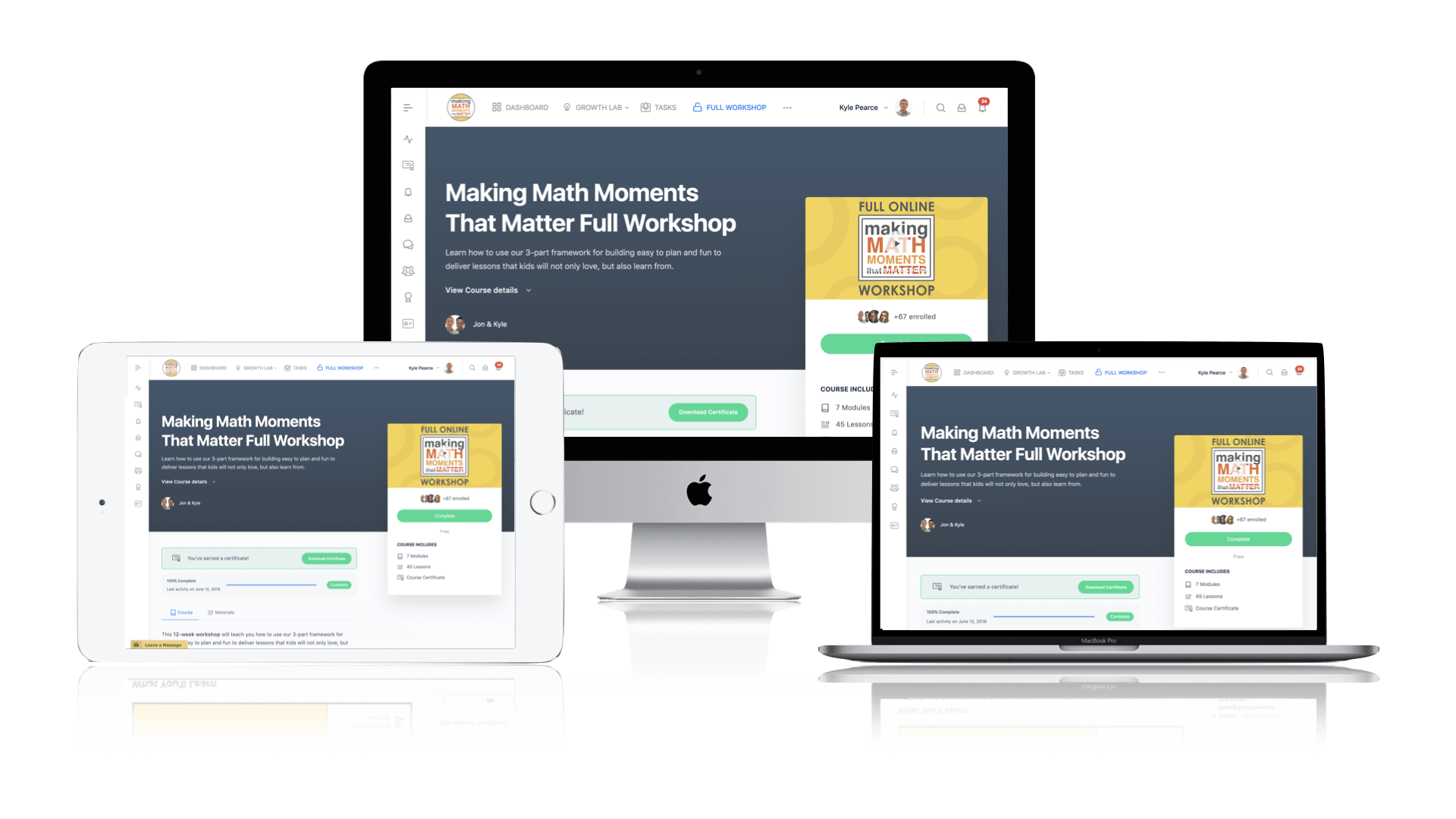
Pedagogically aligned for teachers of K through Grade 12 with content specific examples from Grades 3 through Grade 10.
In our self-paced, 12-week Online Workshop, you'll learn how to craft new and transform your current lessons to Spark Curiosity, Fuel Sense Making, and Ignite Your Teacher Moves to promote resilient problem solvers.
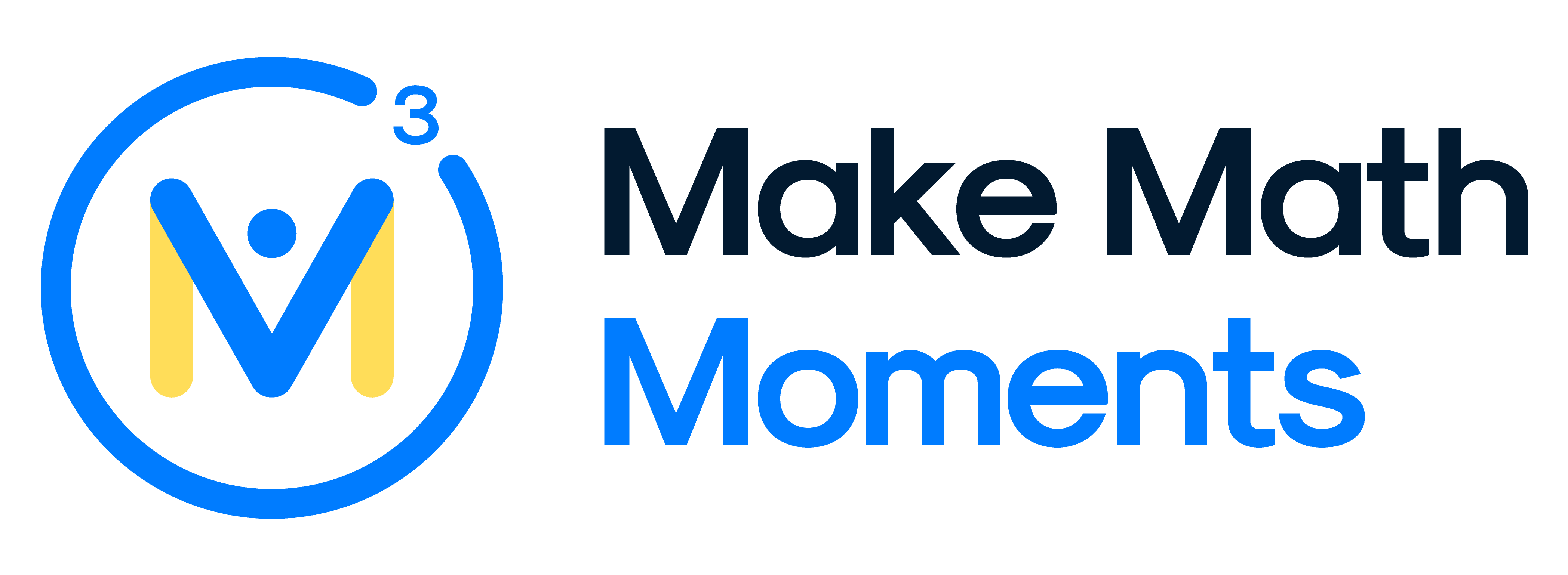



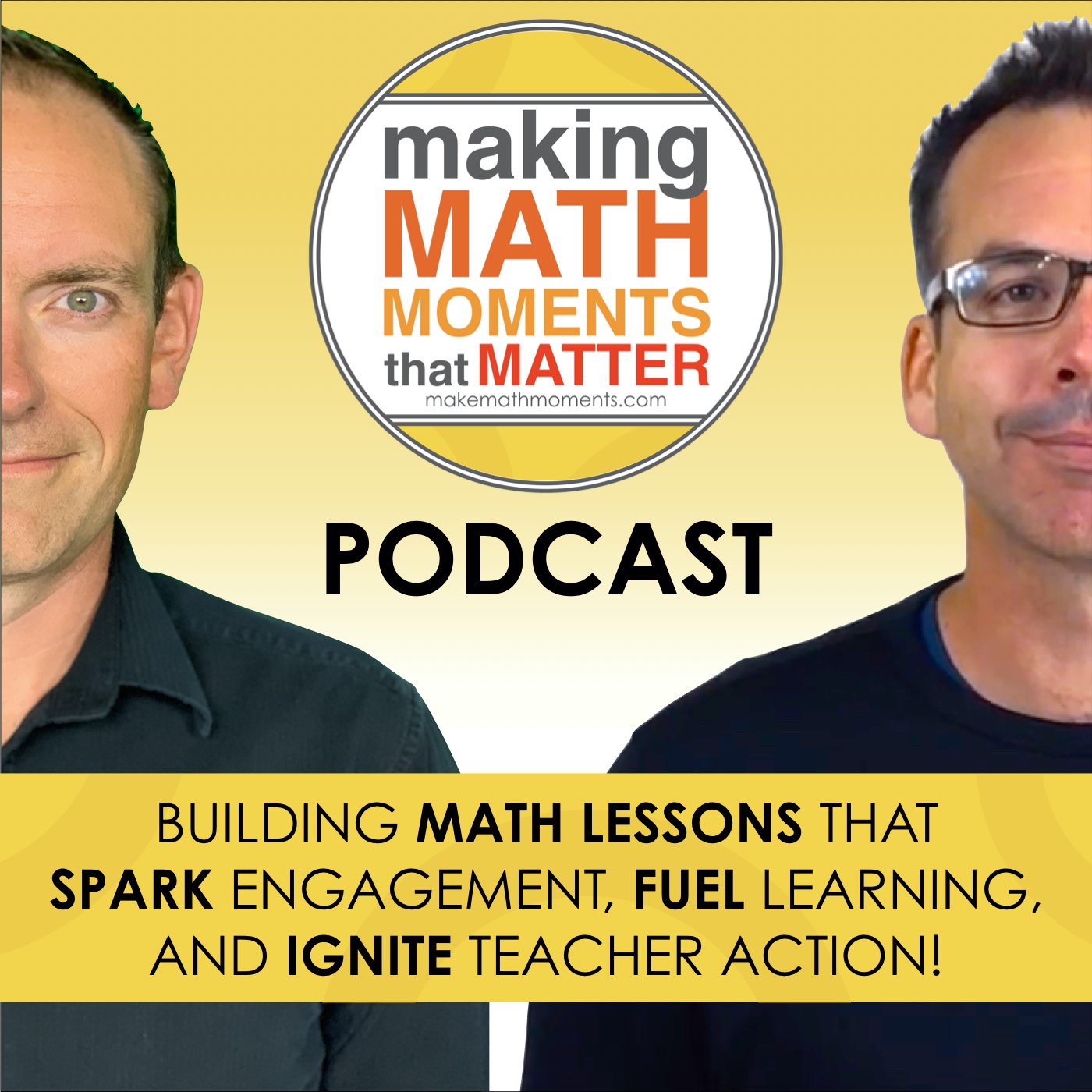

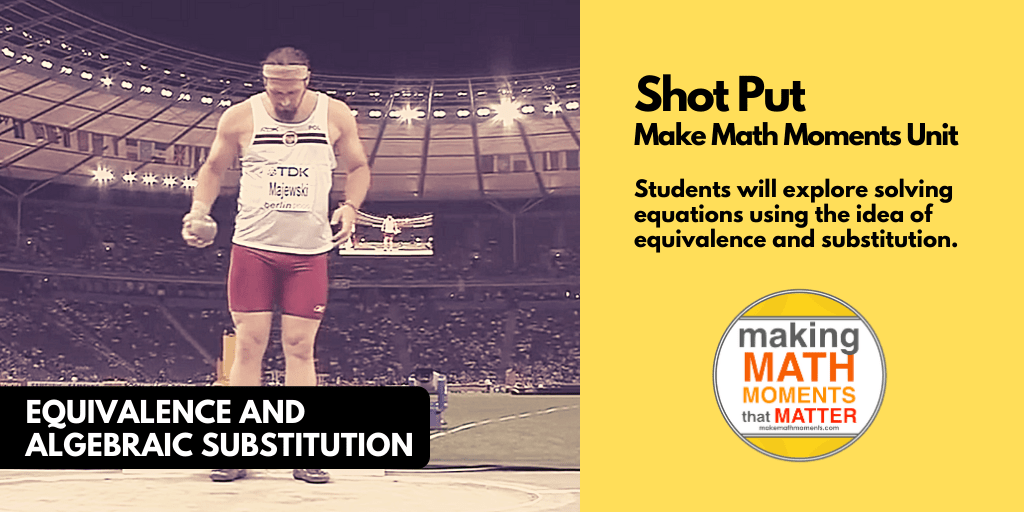
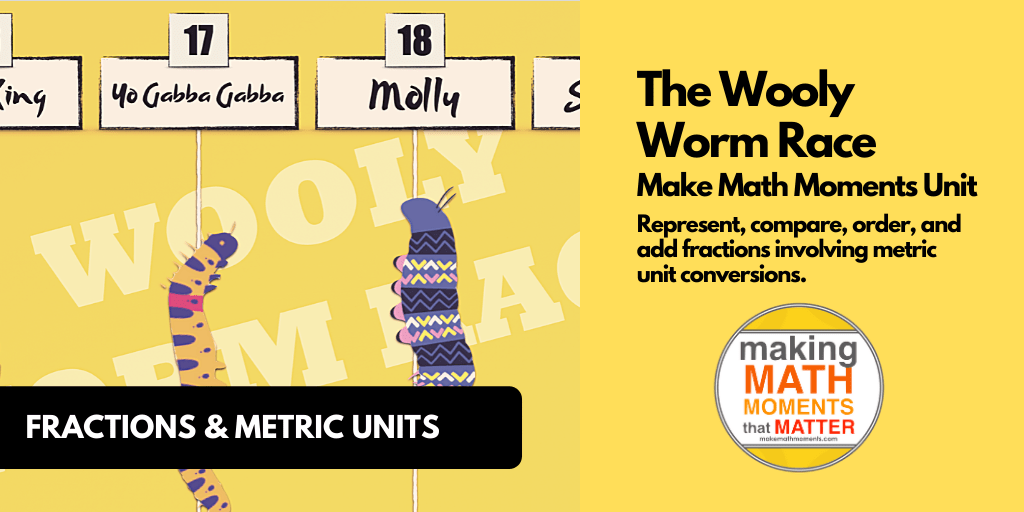
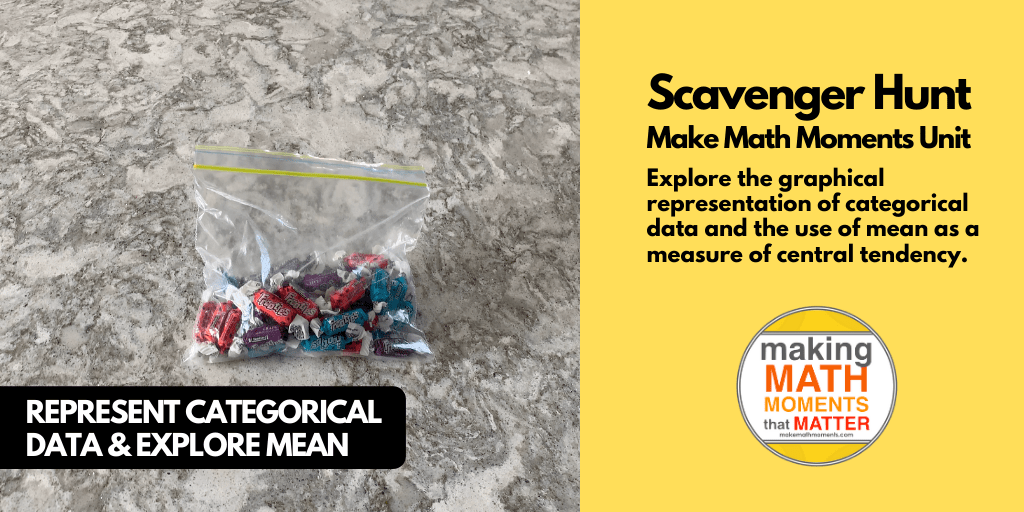

0 Comments